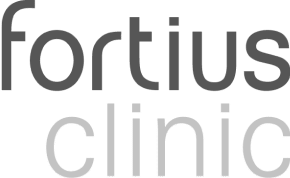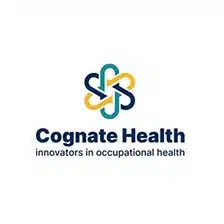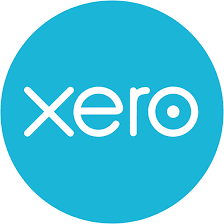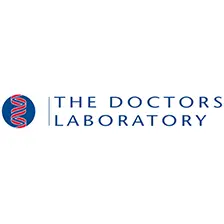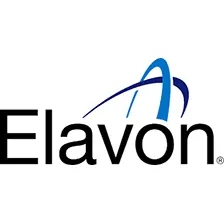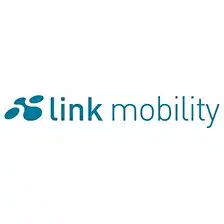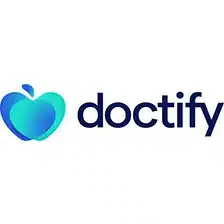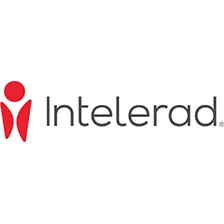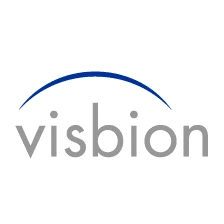What’s the deal with Medical EMR Software, and why does it matter for your practice?
If you’re running a medical practice, you’ve probably heard about EMR (Electronic Medical Records) software and wondered if it’s really worth switching over from paper or outdated systems. You might be asking questions like:
- Is medical EMR software going to save time or add more headaches?
- How can it make patient management easier?
- Will it help with regulatory compliance like HIPAA?
The truth is, a good medical EMR software can transform how you deliver care, improve efficiency, and help you manage everything from patient records to billing, all from one place. Whether you’re a private clinic, a specialty practice, or part of a larger healthcare organisation, there’s a lot to gain from choosing the right system.
What is Medical EMR Software?
Medical EMR (Electronic Medical Records) software helps healthcare providers manage patient records, appointments, billing, and more in one place. Think of it as the digital backbone for your practice. Instead of shuffling through endless paper files or switching between multiple systems, EMR software brings everything into one integrated platform.
And that’s where Meddbase comes in. We’re talking about a cloud-based EMR platform that streamlines every aspect of patient care—allowing you to focus on what you do best: delivering quality healthcare.
Why EMR Software Is Vital for Your Practice
EMR systems have become a fundamental part of modern medical practices because they help healthcare professionals do what they do best—care for patients—without getting bogged down by admin work. Here’s how:
- Improve Efficiency: Manage patient records, appointments, and billing from one interface.
- Accessibility: Secure access to patient information anytime, anywhere. Perfect for remote consultations.
- Compliance Ready: Built-in compliance tools help your practice stay aligned with regulations like HIPAA.
- Integrated Communication Tools: Send appointment reminders and follow-ups directly to patients via secure messaging or email.
- Telehealth Integration: Provide consultations without needing in-person visits—use telehealth features to save everyone time.
Key Features to Look For in Medical EMR Software
Not all EMR software is the same. Whether you’re a specialist clinic or a primary care practice, you should be on the lookout for features that make your workflow simpler. Here’s what matters most:
1. Patient Data Management
The core of any EMR system is how well it manages patient information. Look for a platform that stores medical records, supports easy retrieval, and provides a clean and intuitive user interface.
2. Scheduling and Appointment Management
Being able to manage appointments effectively is key to maximising your practice’s time. A good EMR should have integrated tools that allow patients to book, reschedule, and get reminders without any hassle.
3. Billing and Revenue Cycle Management
Look for built-in medical billing features. These should handle everything from invoices to payments, including insurance claims and integration with revenue cycle management tools. This is a lifesaver when it comes to handling the complex payment processes that medical practices deal with.
4. Telehealth Services
If remote consultations are part of your offering, look for an EMR with telehealth capabilities. This is especially crucial for those providing mental health or other specialty services.
5. Scalability
Whether you’re a small clinic or a growing healthcare group, you need a system that can scale with you. EMR software like Meddbase is built to grow, accommodating new users, patients, and services.
6. Data Security and Compliance
Healthcare data is sensitive, and safeguarding it is not optional. Your EMR software must have strong encryption, backup options, and compliance with privacy laws like HIPAA and GDPR. Meddbase, for example, offers these measures to keep patient data safe.
Benefits of Moving to a Cloud-Based EMR
1. Accessibility and Flexibility
A cloud-based system, like Meddbase, allows doctors, nurses, and administrative staff to access patient records from anywhere—be it in the office, at home, or even on a mobile device. This makes it easier to collaborate across different parts of your practice and helps you support telehealth and remote care.
2. Reduced IT Hassle
No more on-site servers that require maintenance or face downtime. Cloud-based solutions provide reliable uptime and data security, which means less stress for your IT team and more focus on patients.
3. Enhanced Security
Cloud systems offer state-of-the-art encryption and data storage, plus easy backups, helping protect your practice against data loss and breaches.
How EMR Software Can Improve Patient Outcomes
Using EMR software doesn’t just improve back-end efficiency; it also makes a huge difference in patient care quality.
- Faster Access to Patient Records: Real-time access to medical history, test results, and medication lists lets healthcare providers make more informed decisions.
- Reduced Errors: Accurate, digitised records minimise the chance of manual errors.
- Patient Portals: Patients can log in to see their records, book appointments, or request prescription refills, which helps with engagement and adherence to treatment plans.
How Meddbase Leads the Pack
Meddbase is a standout example in the world of medical EMR software. It’s designed to streamline every aspect of patient care—from scheduling and billing to clinical management and regulatory compliance. Here’s how Meddbase makes a difference:
- All-in-One Platform: With everything from appointment scheduling to medical billing integrated, Meddbase simplifies administrative tasks.
- Secure Cloud Access: Unlike other EMR systems that require on-site servers, Meddbase offers a fully cloud-based solution, reducing the need for hardware and IT overhead.
- Intuitive Features: Meddbase’s design keeps things simple, with an easy-to-use interface that reduces the learning curve for new users.
Need more information on Meddbase? Check out our features overview here. Learn more about cloud-based health record systems.
EMR Software Use Cases
Small Practices: For smaller clinics, choosing an EMR that is user-friendly and cost-effective is key. Systems like Meddbase cater to smaller setups by being easy to adopt and scalable, which means practices can grow without switching platforms.
Mental Health Services: EMRs that support telehealth are perfect for mental health practitioners. Secure, remote consultations and documented care plans make following treatment paths simpler.
Multi-location Practices: Larger practices or clinics with multiple locations can benefit from centralised data management that allows clinicians to access patient records from anywhere and keeps all locations synced.
Benefits Beyond the Basics: Enhancing Patient and Staff Experiences
1. Improving Communication
Communication is key in healthcare. EMR software like Meddbase integrates secure messaging, allowing healthcare providers to communicate with patients directly through the platform. This means fewer phone calls, less waiting, and more efficient responses for everyone involved. It also helps clinicians coordinate care internally by offering messaging between healthcare professionals, making collaboration seamless.
2. Analytics for Informed Decision-Making
Analytics play a significant role in modern healthcare. EMR software provides detailed analytics and reporting, allowing practices to gain insights into patient outcomes, financial performance, and operational efficiency. With access to these reports, clinics can identify trends, optimise workflows, and make data-driven decisions to improve patient care.
3. Integration with External Systems
For a complete workflow, EMR systems need to integrate with other systems like laboratories, pharmacies, and imaging centres. Meddbase offers integration with external systems, which means lab results, medication histories, and radiology reports can be pulled directly into the EMR. This ensures that all relevant information is available at the point of care, leading to more effective treatment decisions.
4. Enhancing Patient Engagement
EMR software is also key in boosting patient engagement. Features like patient portals allow patients to book appointments, view their health records, and even pay bills online. This kind of access gives patients more control over their healthcare journey and encourages proactive participation. Better patient engagement often translates to better health outcomes, making it a win-win situation.
5. Workflow Automation
Another significant benefit of EMR software is automation. Automated reminders, prescription refill requests, and appointment bookings mean less manual work for your administrative staff. By automating routine tasks, your staff can focus on more critical aspects of patient care, improving productivity and satisfaction.
Expanding Telehealth Capabilities with EMR
The role of telehealth in modern healthcare has grown dramatically, and having an EMR system that supports telehealth is now more important than ever. Telehealth not only provides patients with a convenient way to consult with their doctors but also expands a clinic’s ability to see more patients without requiring more physical space. Meddbase’s integrated telehealth features allow seamless scheduling, consultation, and record-keeping—all in one place. This makes telehealth just as effective as in-person care while expanding accessibility.
Addressing Common Misconceptions About EMR Software
Despite its benefits, there are several misconceptions about EMR software that need addressing:
1. “EMR is Only for Large Practices”
This simply isn’t true. While EMRs offer many features that are beneficial for larger organisations, they can be just as advantageous for small and medium practices. Systems like Meddbase are built to be scalable, meaning they can grow with the practice, offering the right level of service for different sizes of organisations.
2. “It Will Slow Down My Practice”
The learning curve is often a concern. Yes, there is an initial investment of time and effort required to learn the system, but a well-designed EMR like Meddbase actually speeds up day-to-day tasks in the long run. Training sessions, intuitive interfaces, and customer support all contribute to getting the most out of your EMR system.
3. “Data Isn’t Secure in the Cloud”
Security is often raised as a major concern when moving to a cloud-based EMR. However, reputable EMR software uses advanced encryption, regular data backups, and strict compliance with privacy standards to ensure data remains protected. Meddbase, for example, adheres to HIPAA and GDPR regulations, meaning patient information is kept safe to the highest standards.
FAQs About Medical EMR Software
What is the difference between EMR and EHR?
EMR (Electronic Medical Records) generally refers to digital versions of paper records kept at a specific practice. EHR (Electronic Health Records), on the other hand, is a more comprehensive record that can be shared across different healthcare settings.
Is EMR software secure?
Yes, reputable EMR platforms like Meddbase come with strong encryption and are compliant with privacy standards like HIPAA and GDPR. Cloud-based EMRs also provide regular backups, reducing data loss risks.
How much does medical EMR software cost?
Pricing can vary depending on the features and scalability you need. It’s best to request a live demo or get a customised quote based on your practice’s requirements.
Can EMR software improve practice revenue?
Absolutely. Integrated revenue cycle management, simplified billing, and reduced administrative time all contribute to better efficiency, allowing you to see more patients and manage your practice’s finances effectively.
Common Challenges When Adopting EMR Software
1. Learning Curve: Moving from paper or older systems to EMR can be challenging for some staff. Choosing software with an intuitive interface helps ease the transition.
2. Cost Concerns: EMR systems represent an investment. However, the long-term savings through reduced errors, better billing management, and improved patient throughput make it worthwhile.
3. Data Migration: Transferring old records into a new system can be daunting. Many EMR software providers, including Meddbase, offer data migration services to make the process easier.
4. Staff Resistance: Change can be difficult, and some staff members may resist moving to an EMR system. Addressing concerns openly, offering training sessions, and demonstrating how the software can make their day easier can help gain buy-in.
Why Now is the Time to Upgrade to EMR Software
Whether you’re managing a busy clinic or a specialty practice, EMR software can simplify your workflow, improve patient care, and boost efficiency. Systems like Meddbase allow you to focus on what matters—delivering the best possible patient care—without getting weighed down by admin tasks.
Moreover, patients today expect digital solutions, and practices that don’t keep up risk falling behind. With features like patient portals, secure messaging, and telehealth, you’re providing patients with the tools they need for easy access to their healthcare. This not only makes for happier patients but also enhances adherence to treatment plans, ultimately leading to better health outcomes.
Ready to see the difference EMR software can make? Schedule a live demo with Meddbase today.
Learn more about patient engagement strategies with EMR software.
Last Thoughts: Medical EMR software, such as Meddbase, provides an efficient, secure, and future-proof way to manage your practice. From scheduling and billing to telehealth and patient engagement, it’s an all-in-one tool that can transform how you deliver care and manage data—all while keeping you compliant with regulations.
Make the move to EMR today, and see how it can save you time, improve patient care, and grow your practice in the modern healthcare landscape.
Want to dive deeper into what cloud-based EMR systems can do for your practice? Visit our resources page for more insights.
Related Articles You Might Find Useful:
- Understanding Data Security in Healthcare
- The Benefits of Cloud-Based Systems for Clinics
- How Telehealth is Changing Patient Care
See also: Free EMR options for small practices, Best EMR systems for medical spas, and How to train your team on EMR software.
Remember: The right EMR software isn’t just a tool; it’s an investment in better patient care, improved efficiency, and long-term growth for your practice.












